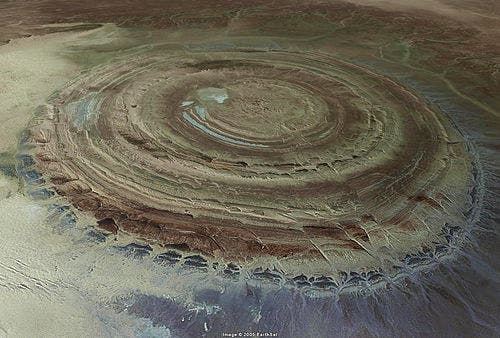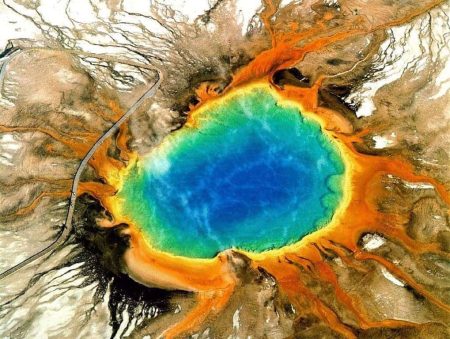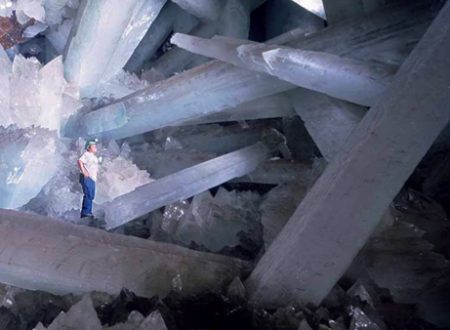The Eye of the Sahara, also known as the Richat Structure, is a large, circular geological formation in the Sahara Desert of Mauritania. It spans an impressive 50 kilometers (30 miles) in diameter and is thought to have been formed by erosion and uplift.
Although it looks like an impact crater, it’s rather an example of a geological structure called a symmetrical anticline — a type of fold in rock layers that was exposed by geological processes and erosion. In addition to being a spectacular place to view with satellite imaging or even to tour locally, it’s also been studied by geologists to understand the geology of the region and overall, it’s one of the most spectacular geological formations on the planet.
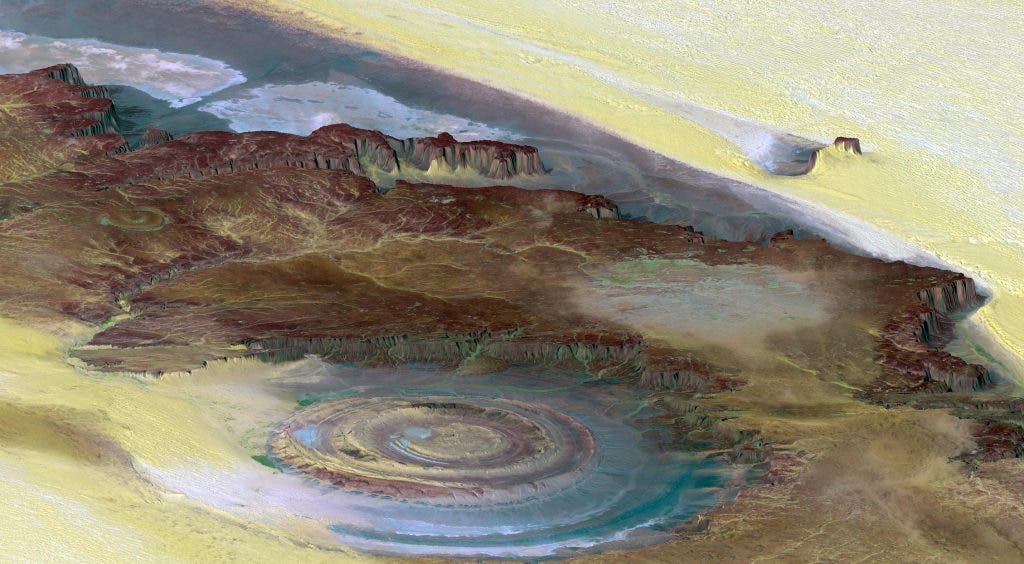
The Eye of the Sahara is located in a rather remote area in the Sahara, and the first people who noticed something odd about it before aerial imagery probably didn’t know just how odd it really was. That’s why the 50 km formation didn’t receive much attention until some astronauts made reports about it — but then, it became one of the planet’s most famous curiosities.
The structure is an eroded geological dome of exposed sedimentary and igneous rock on the surface that appear as concentric rings. Igneous rock is exposed inside, featuring a spectacular array of rhyolite and gabbro rocks that have undergone hydrothermal alteration, as well as a central megabreccia — a type of rock that contains large fragments, sometimes up to hundreds of meters.
As mentioned, the Eye of the Sahara is an anticline — a type of geological fold in which the layers of the rock are bent upward, like a dome-like structure. This is the opposite of a syncline — a fold in which the layers of rock are bent downward. Anticlines can be formed by tectonic processes that produce compressional forces that pushe the rock upward, or by erosion that removes the softer layers of rock, leaving behind the rougher, dome-shaped rocks.
The eye of the Sahara is one of the most famous examples of a symmetrical anticline.
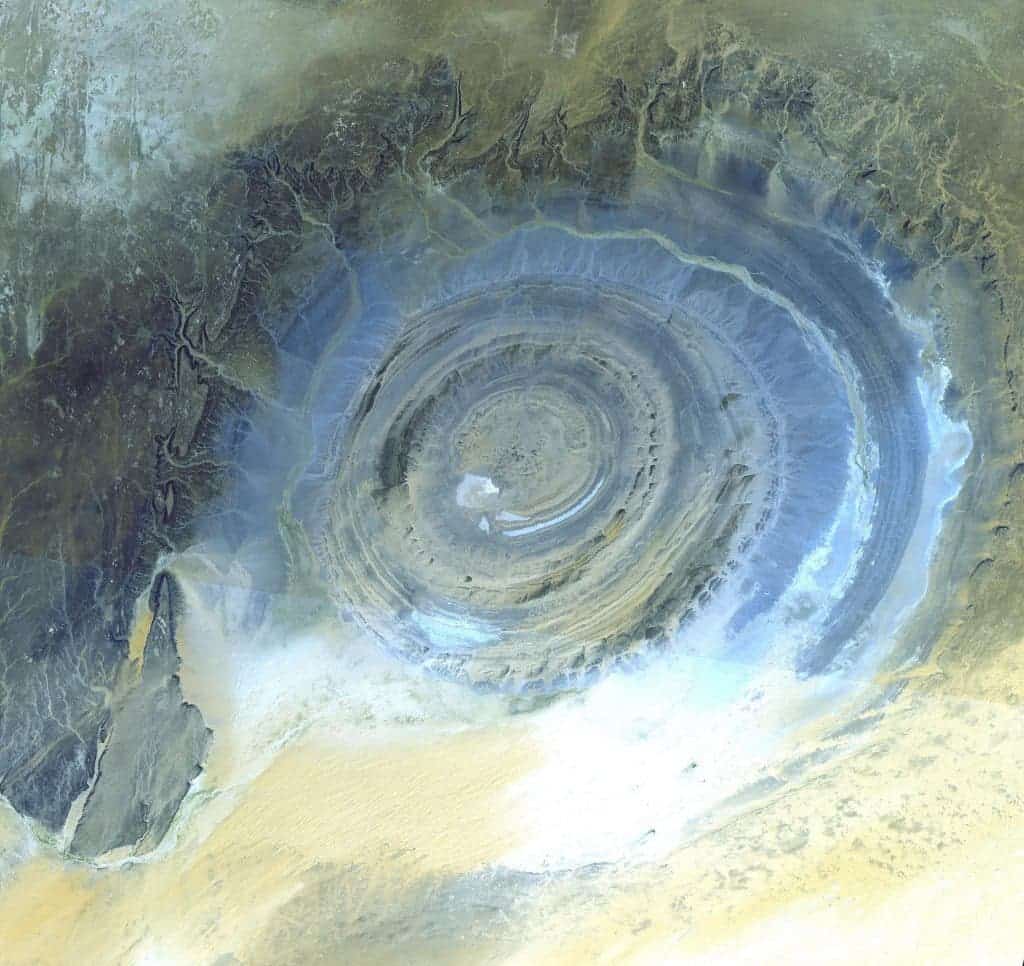
The Eye of the Sahara is a prominent feature, but for a long time, it was mistakenly thought to be a crater. It lies in Sahara’s Adrar Plateau, near the city of Ouadane, in west–central Mauritania, Northwest Africa. It’s also called the Richat Structure, as in the local dialect, Richat means ‘feather’; in Arabic, it is also known as ‘tagense’ — a term used for the circular opening to the leather pouch used to draw water from local wells.
Figuring out its origin wasn’t exactly easy; the Richat structure has been studied by numerous geologists but didn’t give its secrets away easily.
“The Richat structure (Sahara, Mauritania) appears as a large dome at least 40 km in diameter within a Late Proterozoic to Ordovician sequence. Erosion has created circular cuestas represented by three nested rings dipping outward from the structure. The center of the structure consists of a limestone-dolomite shelf that encloses a kilometer-scale siliceous breccia and is intruded by basaltic ring dikes, kimberlitic intrusions, and alkaline volcanic rocks” – small excerpt from a paper.
You can also see it on Google Maps, it’s really a brilliant view, and you can zoom in and out for proportions (coordinates are 21.124217, -11.395569).
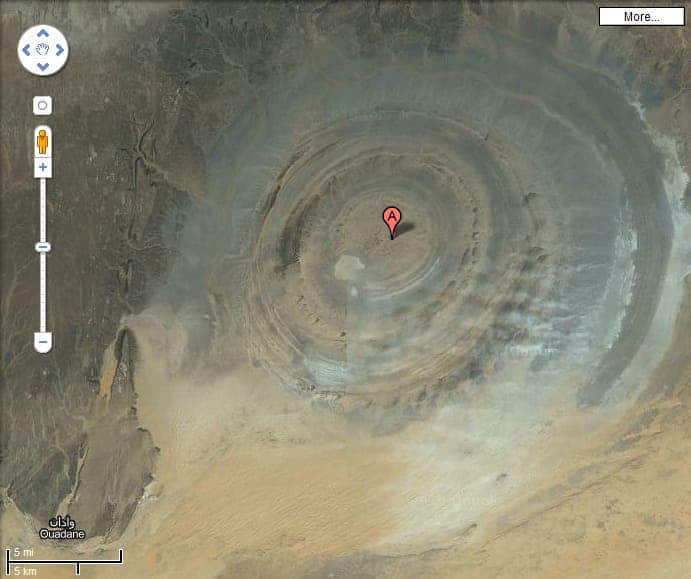
The Eye of the Sahara is one of the most impressive geological features worldwide, and it’s not hard to understand why it was selected as one of the first 100 geological heritage sites identified by the International Union of Geological Sciences (IUGS) to be of the highest scientific value. However, unlike other remarkable geological structures, it’s more spectacular when viewed from afar than from close by.





